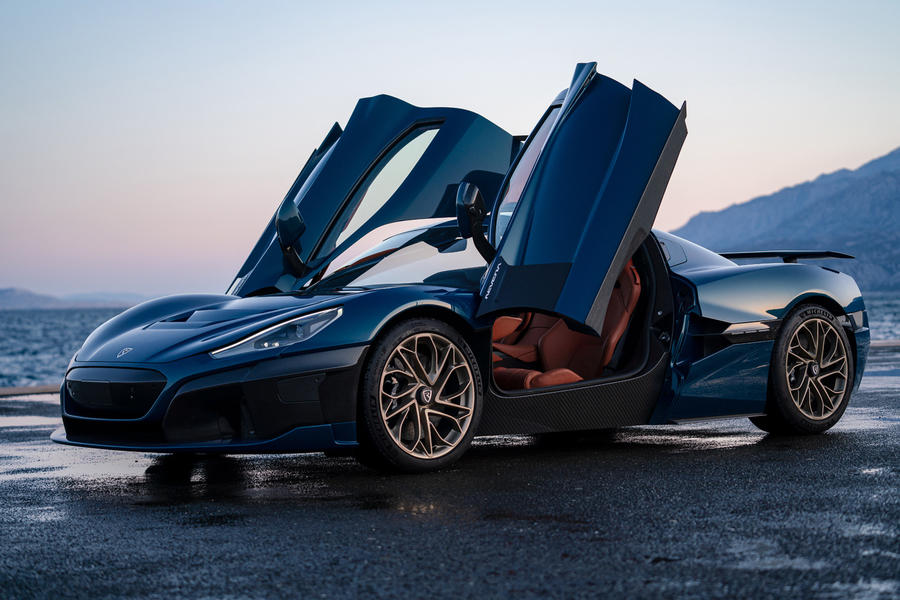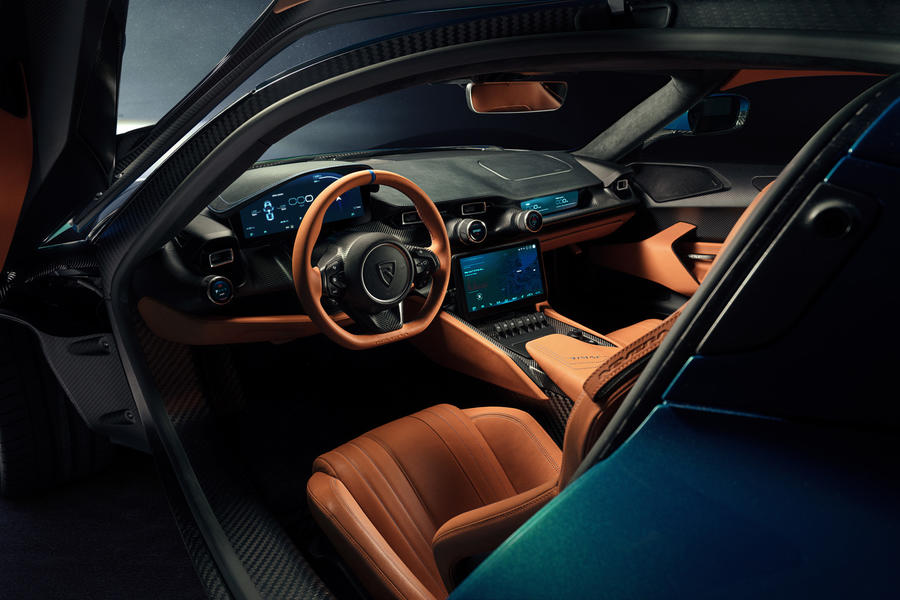Croatian electric hypercar manufacturer Rimac is taking its radical C_Two concept into production with a raft of improvements and a new name: Nevera.
The culmination of three years of development following the C_Two concept's unveiling in March 2018, the €2 million (£1.72m - $2.4m) Lotus Evija rival has been renamed in tribute to the strong and sudden storms that occur on the Croatian coastline.
Rimac claims its engineers have "refined their new flagship on every level", using mostly bespoke, in-house-developed components in pursuit of the "ambitious performance targets" it outlined in 2018.
In keeping with that aspiration, the concept's powertrain has been largely carried over into production. The Nevera still features a high-output motor at each corner, giving it a combined 1914 hp and 1741 lb-ft (an increase of 45lb ft), which, Rimac reckons, is a threefold increase on the output of a conventional combustion-engined supercar. Rimac highlights that the Nevera is 2.5sec quicker to 186mph than was initially planned, needing just 9.3sec.
Claimed to be capable of accelerating from rest to 62mph in just 1.85sec and covering a quarter mile in just 8.6sec, the Nevera will be the fastest-accelerating production car yet built and its 258mph top speed puts it roughly on a par with the W16-powered Bugatti Chiron.
![]()
Power is stored in an H-shaped 120kWh bespoke battery, which is claimed to produce up to 1.4MW of power and gives a WLTP range of 340 miles. The power pack also forms a structural element of the car's monocoque chassis, increasing stiffness by 37%, and is placed to allow for 48:52 front-to-rear weight distribution. According to Rimac, the Nevera's central monocoque is the largest single-piece carbonfibre structure used across the entire automotive industry.









































Add your comment